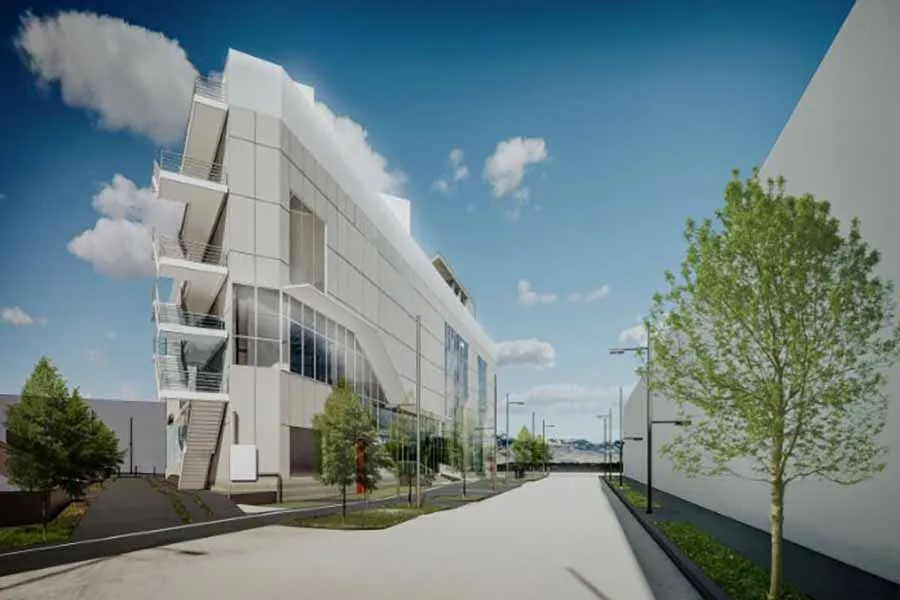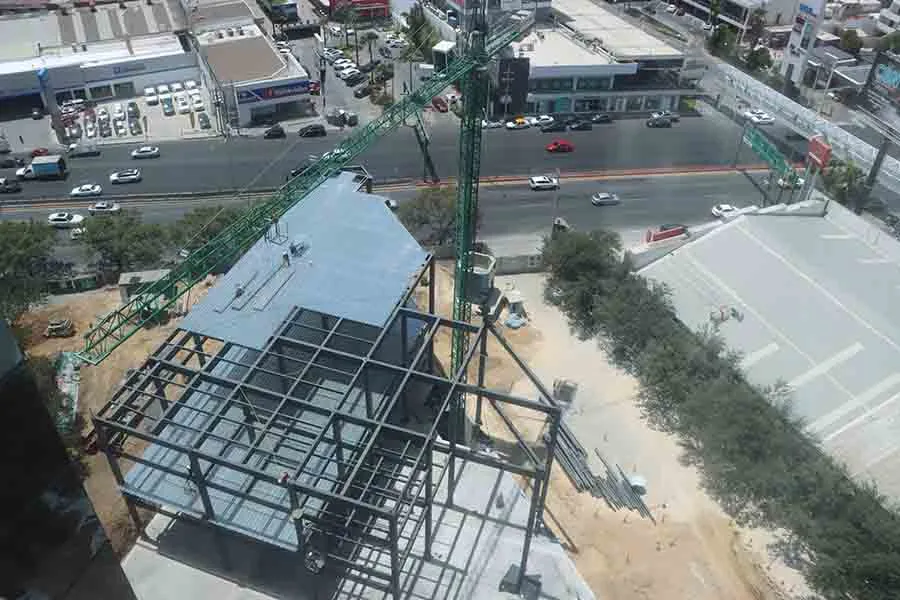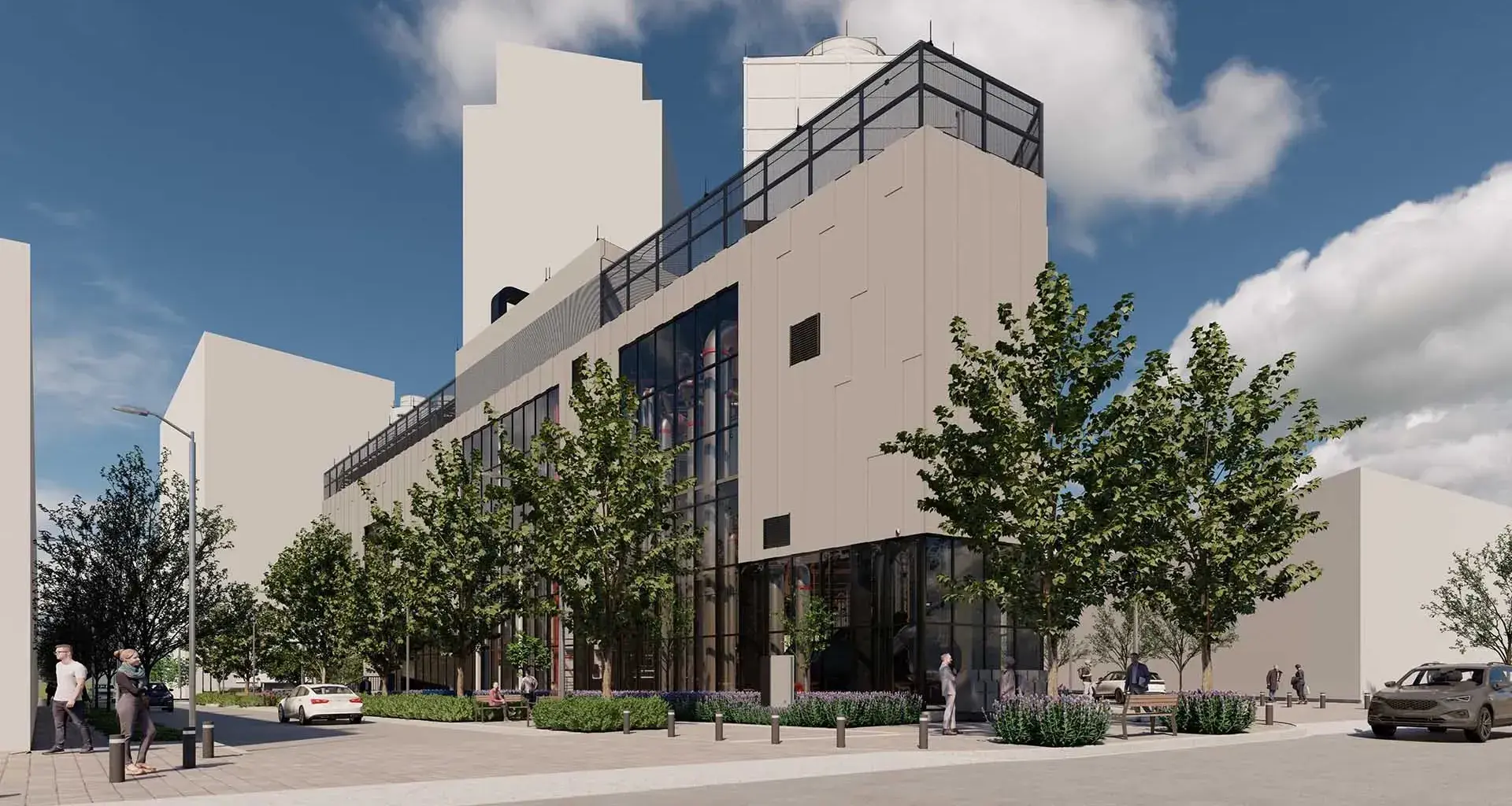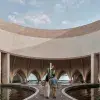Tec de Monterrey has presented Núcleo, a district center that provides cleaner-energy utility services to meet its objective of achieving carbon neutrality by 2040.
This space is part of the actions implemented by distritotec to improve the Monterrey campus and contribute to reaching the objectives set out in Ruta Azul, the Tec’s Sustainability and Climate Change Plan for 2025.
While presenting the building project, which will be located on Avenida Eugenio Garza Sada on the Monterrey campus, the institution’s Rector and President David Garza remarked that this type of initiative also aims to raise awareness in the community.
“We need our projects to be ambitious, and we need these ambitious projects to start immediately. The future of all of us depends on these projects,” he said.

Núcleo and its contributions
Núcleo will provide cleaner-energy services such as air-conditioning, heating, drinking water, fire protection systems, and electricity distribution to all current and future buildings on the Monterrey campus.
A district energy center will house thermal energy generation services such as cooling, heating and electricity and distribute them by means of an underground network to all the connected buildings.
Núcleo is expected to begin operating in summer 2024.
“The future of all of us depends on these projects.”-David Garza
Feniosky Peña-Mora, Dean of the Tec’s School of Engineering and Sciences, mentioned that Núcleo’s services will be brought online in 5 phases.
“The first phase will have 1,060 tons of refrigeration (T.R.), which will provide the resources necessary for the new buildings that are being built on campus such as the halls of residence, Expedition, and Núcleo itself.
“During the final phase, this capacity will be increased to 14,200 tons, which will be enough to supply the more than thirty buildings on campus,” he said.
The Núcleo project is expected to reduce carbon dioxide equivalent emissions by more than 30% and the energy consumption of supported buildings by at least 30%, as well as reducing the amount of equipment that is currently being used.
“We expect to reduce the equipment used to cool water by more than 75%, to provide hot water by at least 25%, to generate electricity by more than 64%, and to protect against fires by 90%.
“It will also reduce the current level of chemicals and salts used to treat the water,” he explained.

He added that this building is also intended to be used as a living laboratory where students can participate, better understand the processes involved, and how they can also have an impact on the environment.
Mario Adrián Flores, Vice President of the Monterrey Region and Monterrey Campus Director mentioned that distritotec is currently activating an innovation district in the area surrounding the campus and is looking for ways to do so in a sustainable manner.
“If we’re going to talk about innovation, science, technology and a living, active knowledge-based space, then we must also talk about the responsibility we have as an institution, especially on this campus,” he remarked.
Initially, this space will focus on generating thermal energy to be used for the air conditioning and heating services, and this energy should come from renewable sources, said Victor Gutiérrez, National Leader of Environment and Sustainability for the Tec’s campuses.
“This is, of course, one of the project’s objectives and will mean that the impact we have on reducing CO2 emissions will be significant,” he added.

Ruta Azul
Ruta Azul, the Tec’s Sustainability and Climate Change Plan for 2025, is an initiative from Tec de Monterrey to design and manage its integrated environmental sustainability strategy.
First announced in 2021, it has already accomplished several achievements such as reducing Tec de Monterrey’s greenhouse gas emissions by more than 40% between 2019 and 2022, David Garza commented.
“In 2022, 70% level of all our energy consumption came from renewable sources.
“We also managed to reduce our water consumption by 15%, despite this being the year when we had the most undergraduate students ever studying on our campus,” he pointed out.
The E2 Parking Zone, which is hydro-sustainable, was also recently inaugurated on the Monterrey campus.
The Ruta Azul strategy is built on 6 axes of strategic action: culture of sustainability, mitigation, adaptation, education, research, and outreach.
YOU MIGHT ALSO BE INTERESTED IN READING:





